The Cambrian period, dating to some 560 to 500 million years ago, is well known as being that time when all of the basic types of animals that inhabit our world today first appear in the fossil record. From the jointed-legged arthropods or the crawling molluscs to the many different kinds of worms they all appear to have become identifiable groups during the Cambrian.
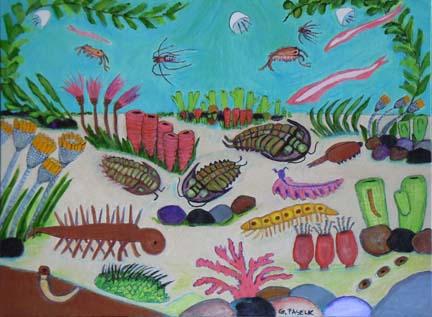
The reasons for this sudden explosion of life are still a matter of intense study, the best scenario at present is that it was during the Cambrian that the first ‘hard parts’ of animals evolved, shells and spines for defense, claws and teeth for offense. These new structures initiated an ‘arms race’ amongst early life forms, which led to a great diversification in the kinds of animals there were.
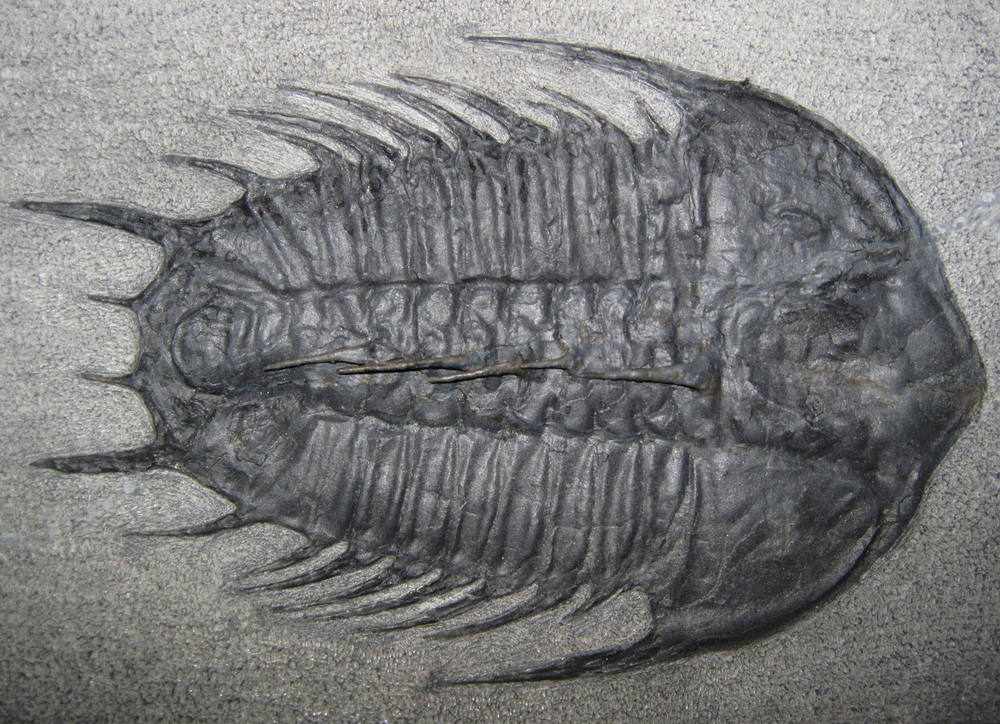
So if the Cambrian period is the time when the major types of animals evolved it is also the time to look for the earliest development of the characteristic features of those animals, the jointed legs of arthropods, the shells of mollusks and etc. In today’s post I will be discussing three newly discovered fossils highlighting the way paleontologists are studying the Cambrian Period but I will not be following my usual technique of discussing the earliest animal first and then moving forward in time because these three creatures may have all lived at the same time.

The first creature I’ll discuss is a member of the ‘weird wonders’ from the famous Burgess Shale in British Columbia; see my post of 29 September 2021. The animal is called Odaraia alata although it’s also known as the taco animal because of the distinctive taco-shaped shell that covers the front half of its body. Odaraia was first described over 100 years ago as an arthropod, and at 20cm in length one of the largest. However because only a few specimens were found and because that taco shaped shell covered some of the animal’s most important anatomy, where exactly within the arthropods it belonged remained controversial.
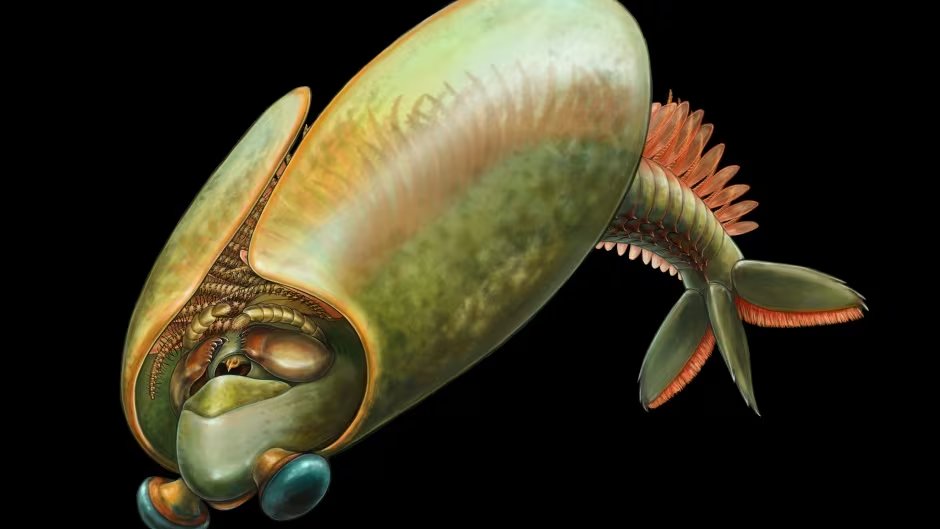
Most paleontologists thought that Odaraia swam through the upper water column capturing food particles in the opening of its shell as it swam but how it caught that food and whether it had mandibles like modern insects and crustaceans or lacked them like the trilobites did was unknown. (By the way did you know that arthropod mandibles, their jaws that is, are actually modified legs? That’s right, insects, crabs, spiders and shrimp all chew with their feet, or rather feet that have evolved in shape to crush and tear rather than walk.)
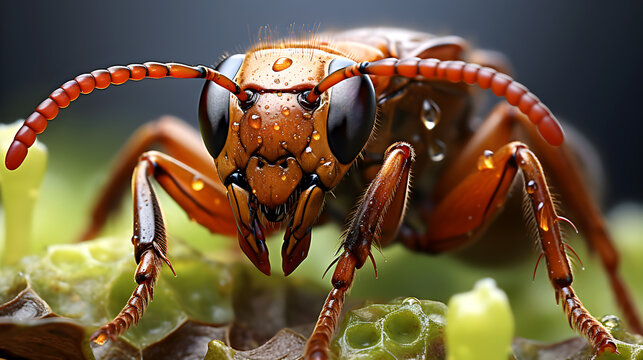
Now a new study from researchers at the Royal Ontario Museum (ROM) has succeeded in answering those questions. Using some new specimens and the latest technology the paleontologists have found that Odaraia did have a small set of mandibles near its mouth, making it one of the earliest arthropods to possess them. Also the team discovered that inside of its shell Odaraia possessed 30 pairs of legs that had been modified with numerous spines to capture food passing through the shell. With 30 legs covered in spines Odaraia had a very effective net inside its shell for capturing food.
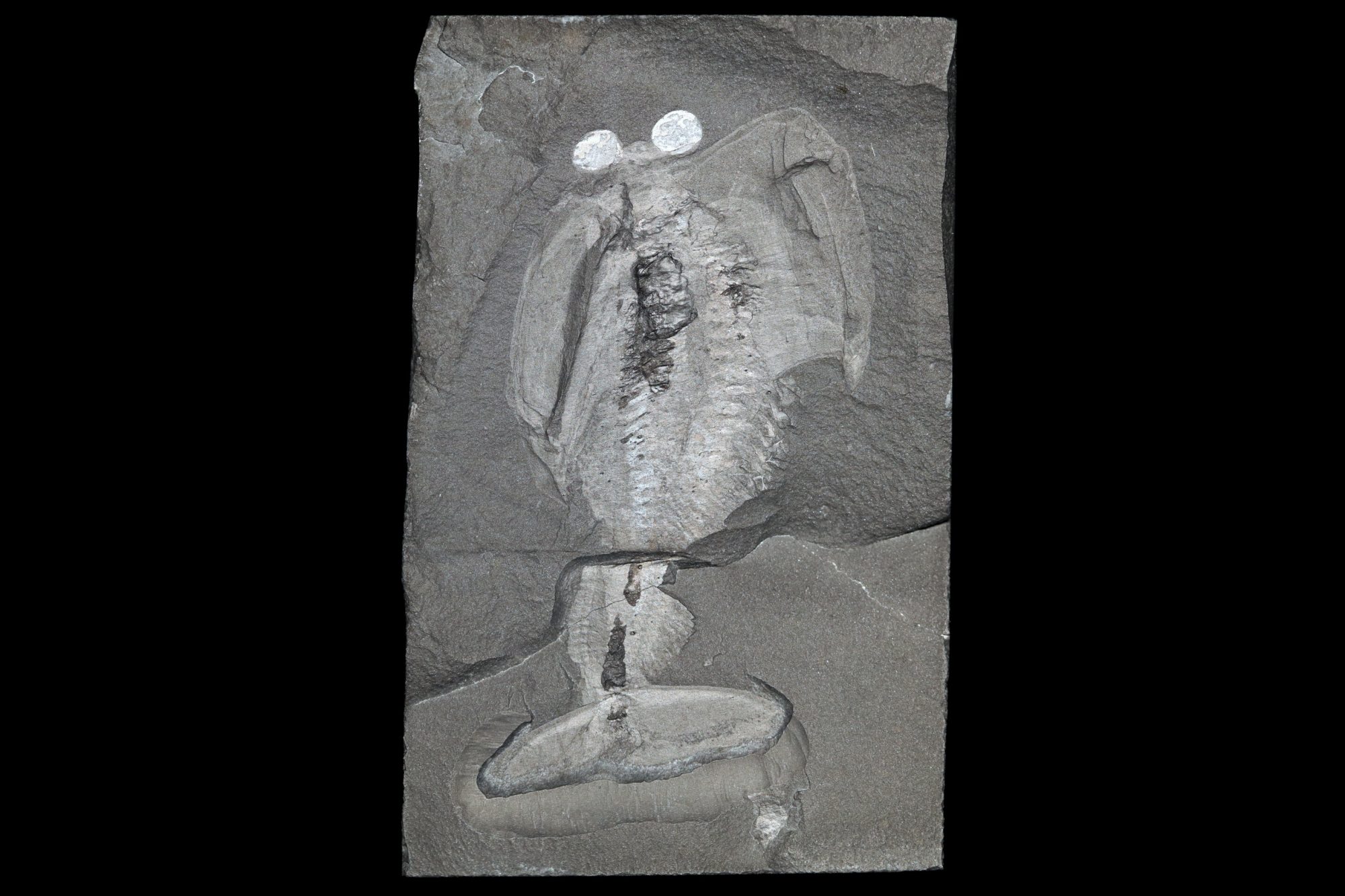
One interesting fact about arthropods in general is the way that they often change their shape as they grow and mature, I’m talking about the process of metamorphosis where for example a caterpillar changes into a butterfly. The butterfly is the mature, sexual stage while the caterpillar is the immature or larval stage, very different in shape even though they are the same species. As you might guess paleontologists often have enormous difficulty in connecting fossils of larva to the adult species they mature into. Despite this however paleontologists are always on the lookout for fossils of larva because those immature specimens can tell them a great deal about how the species grows and matures.

A good example of this comes from a recent paper by Doctor Martin Smith of the Oxford University based upon a larva fossil no bigger than a poppy seed that was discovered in half billion year old rocks from Northern China by colleagues at Yunnan University. The study of microfossils, complete fossils so small you need a microscope to examine them at all, is a science to itself where specimens of fossil bearing rock such as limestone are dissolved in acidic solutions. The tiny bits left over then have to be examined to see if any are interesting fossils, a job that requires a great deal of work and patience.
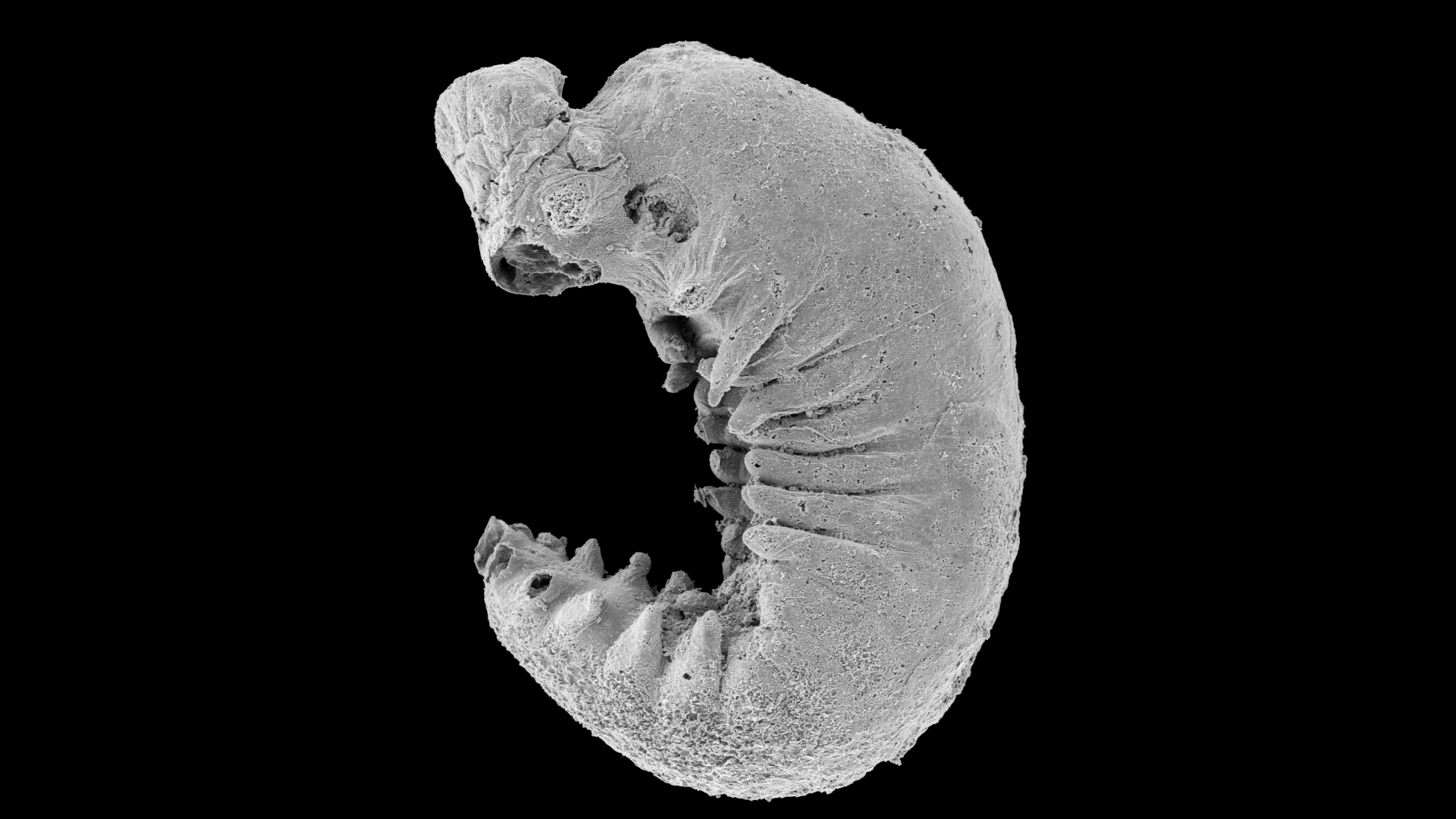
As soon as they saw the specimen the researchers at Yunnan knew they had found something special. First of all they could see that it was an arthropod larva of some type, and in addition the specimen was so well preserved that, even though it was only the size of a poppy seed, it might still have evidence of the internal structure of the animal. The problem was that Yunnan University did not possess the necessary equipment to examine the inside of the fossil.
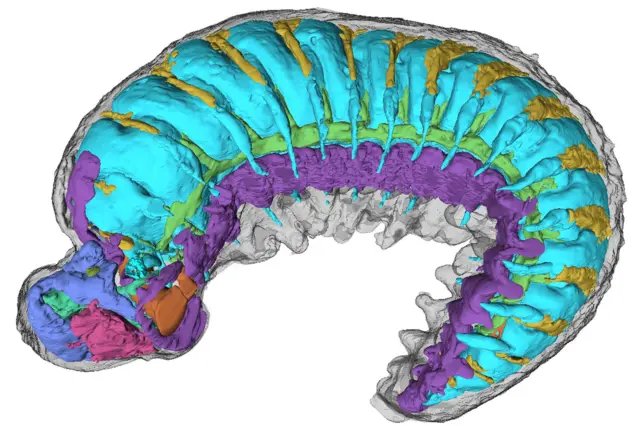
Enter Dr. Smith, who was well acquainted with Oxford’s Diamond Light X-ray Source. The paleontologists at Yunnan allowed Dr. Smith to take the larva specimen back to England where much of its internal structure were revealed in Smith’s lab. Despite its small size the fossil’s X-rays revealed a developing brain cavity, traces of the digestive system along with the circulatory system and even nerve endings to the legs and eyes. The 500 million year old larva has given paleontologists new insights into how the ancestors of today’s insects, crustaceans and other arthropods grew and matured.
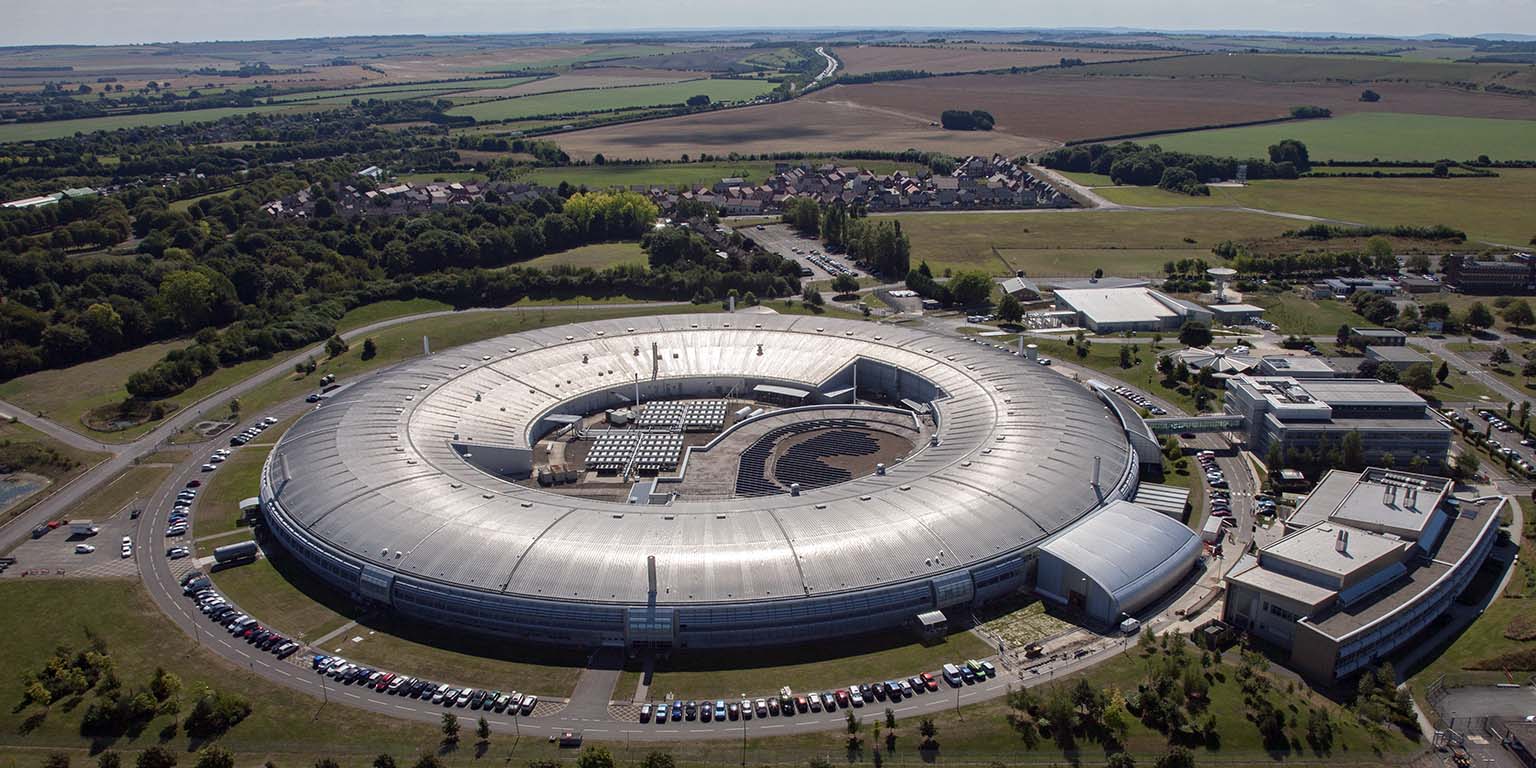
Finally today I’ll discuss a recent paper about a 510 million year old fossil animal from a completely different group of animals, the mollusks, but by a coincidence from the same two Universities, Yunnan in China and Oxford in the UK.
We’re all familiar with mollusks, particularly the shelled variety of bivalved clams and oysters along with single shelled snails. Just how the earliest mollusks first developed their shells is a subject of considerable study.
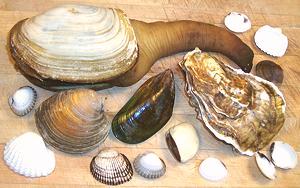
That’s what makes the specimens discovered at a road building site outside of Kunming China by Yunnan University Paleontologist Guangxu Zhang so interesting. Looking like a slug covered by hollow spines the animal, which has been given the name Shishania aculeata, gives paleontologists clues about how the earliest molluscs evolved their shells.
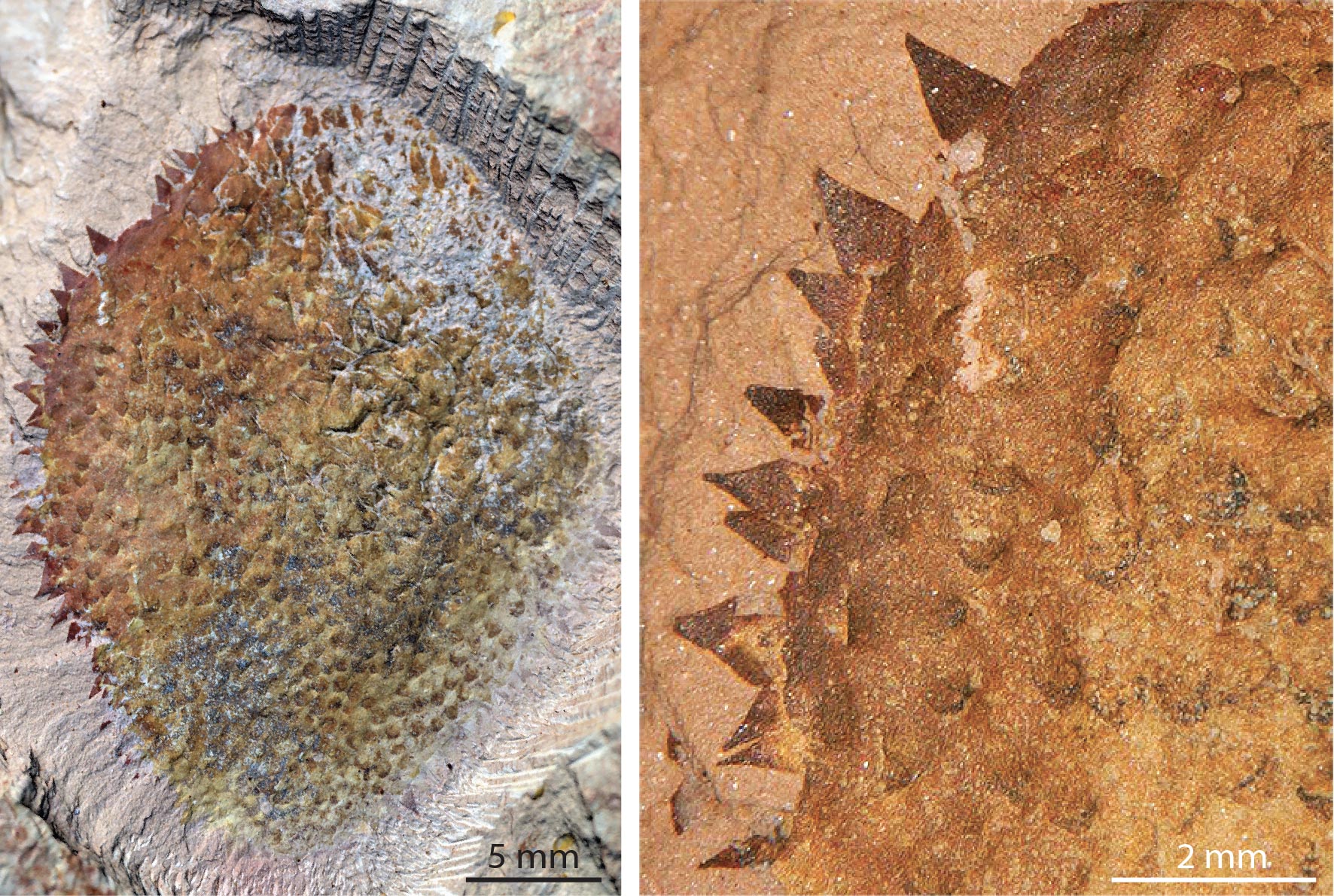
“The spines, which might also have been sense organs, probably helped Shishania and other molluscs to avoid predators as they crept along the Cambrian sea floor,” according to Luke Parry, a paleontologist at Oxford University who also contributed to the paper. “The fact that we have any of these fossils is pretty amazing.”
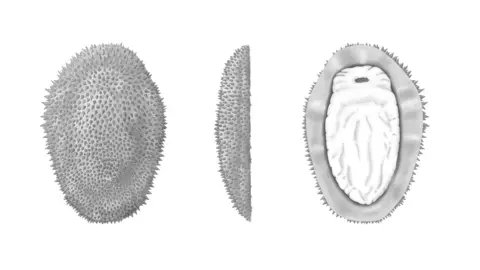
If you think about it, it’s pretty amazing that we have any of these wonderful fossils of animals that lived, and died a half a billion years ago.
